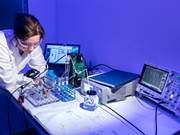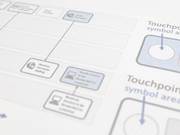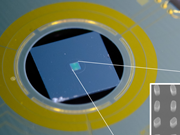Riving genererer enorme mengder avfall, samtidig som materialer i nybygg står for store utslipp og miljøbelastninger. Gjenbruk av byggematerialer er ressurseffektivt og kan i tillegg...
Søk i SINTEF
Ventilasjon i bygninger
Energieffektivisering og økt varmekomfort har ført til at moderne bygninger er mer lufttette enn tidligere bygningskonstruksjoner. Tettere bygninger har redusert den ukontrollerte ventilasjonen...
Arkitektur, estetikk og byggeskikk
Arkitektur og estetikk er grunnleggende premisser for livskvalitet. Kvaliteter som bygningsvolum og -høyde, bevaring av terreng og vegetasjon og materialvalg er av stor betydning både...
Avløpsvann

SINTEF bistår kommuner, interkommunale selskap og privat industri med å finne riktige prosesser og teknologi for håndtering av avløpsvann og slam. Trygg behandling av avløpsvann,...
Hydrogenteknologi og energilagring
SINTEF har kompetanse på energilagring, brenselceller og hydrogenproduksjon...
Automatic differentiation
Automatic differentiation gives derivatives and gradients of numerical programs with respect to the input parameters. This is essential when a numerical model is to be fitted to data, updated to...
Iron and steel
SINTEF offers recognized expertise in combination with unique laboratory facilities. Research is carried out along the entire value chain from primary production to product development and...
Medical Sensors and BioMEMS

Microsystems for medical, biological, and environmental applications with focus on microfluidic technologies, biosensors, and sensors for in vivo measurements. We apply our expertise within...
Human-Computer Interaction (HCI)

Researching the interplay between technology, humans, and society. Developing and evaluating computer systems suited to the needs of humans and society. The HCI group is multidisciplinary,...
Image analysis
Image analysis is the extraction of meaningful information from two-dimensional (2D) or three-dimensional (3D) digital images using digital image processing techniques. Image analysis tasks can...
Computational Geometry
Computational geometry is the research field that relates to the shape, description, and properties of physical objects. SINTEF Oslo has been a key player in this field for five decades. Read...
Explainable and Trustworthy AI
Machine learning and artificial intelligence are very flexible and powerful methods for modelling and prediction, but they rarely provide any human understandable explanation or justification for...
Modelling of sustainable energy systems
Our work contributes to a future green, sustainable and modern energy system. We develop and apply models for handling uncertainty, analysing profitability, emissions, socio-economic and...
Business economics
In SINTEF we use and develop quantitative methods and models to do economic analysis within a range of different sectors. The analyses is performed on different time horizons, from long-term...
Communication systems and security
Cyber physical systems where physical processes and devices are coordinated create new possibilities to create adaptive and scalable distributed solutions within many areas, for example solar...
Intelligent Autonomy
Smart design of sensors and onboard AI enables safer, more capable, and more efficient autonomy for unmanned ground vehicles and drones. Autonomous vehicles rely on their ability to sense and...
A digital twin for additive manufacturing (AM) fuses data from part design, function and process simulation, and process monitoring for supporting quality control and certification of parts. The...
Sustainability assessment
We develop methods and models that assess – in a systems perspective – societal impacts of emerging technologies and structural change in terms of the UN's SDG indicators. Sustainability -...
Micro Optics

Micro-Optics concerns development of miniature components for light manipulation, such as micromirrors, microlenses, diffractive- and meta-optical elements, and photonic integrated circuits. Our...
Motion Planning
One of the main components behind autonomous robotics is motion planning. Motion planning is the problem of determining how a robot should move in order to fulfil its goals, while avoiding...